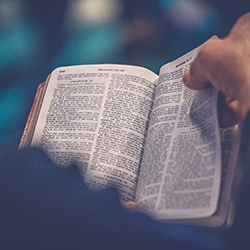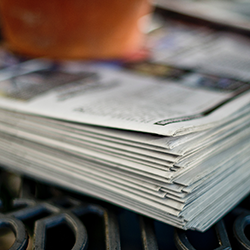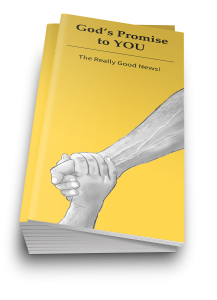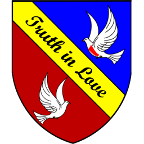Latest Posts
View the latest posts in an easy-to-read list format, with filtering options.
View the latest posts in an easy-to-read list format, with filtering options.
Multi-part posts on a particular topic, grouped together in "series" pages.
Look through our blog archive by year / month, or in a massive title list.

12/30/2025 - Weep-Laugh; Mourn-Dance Ecclesiastes 3:4 says, 4 A time to weep and a time to laugh;A time to mour... Read More

12/29/2025 - Ecclesiastes 3:1 begins, 1 There is an appointed time for everything. And there is a time for ever... Read More

12/27/2025 - I am told that the spot price for silver at the Comex took 145 days to go from $30 to $40. It took... Read More
Over 100 books covering a variety of topics
Short, single-page teachings on a topic
Single page teachings by various authors
Monthly newsletter containing ministry updates and long-term teachings
Audio recordings of teachings and discussions on a variety of biblical topics
Vlog recordings with Dr. Jones and video recordings of bible conferences.
Read over 100 books written by Dr. Jones, available to read for free online. Several of the books have also been translated into different languages, and are also available to read for free. The only time you pay is when you purchase a physical version of a book.
View Full Book List




Read a variety of tracts that condense a topic into a short, single page format. These tracts can be read for free online, or physical copies can be purchased in bundles. If you are subscribed to the FFI Newsletter, you will receive new tracts when they are released.
View Full Tract List




Read articles written by Dr. Stephen Jones and a variety of other authors.
View Full Article ListThe FFI Newsletter is a monthly newsletter written by Dr. Stephen Jones that gets posted online and mailed physically to newsletter subscribers. These include long-term teachings and ministry updates when available.
View Full FFI ListListen to audio recordings of teachings from Dr. Jones and discussions on a variety of biblical topics, available for free online.
View Full Audio ListWatch video recordings of conferences, as well as a variety of interviews and vlogs from Dr. Jones.
View Full Video ListFirst time here, and don't know where to start? No worries, we got you covered.
We have taken the five ministry gifts (Evangelists, Pastors, Teachers, Prophets, and Apostles) as an outline for the courses of Bible study in this School.
Our purpose is to equip those who are ministering with a knowledge of the Word, so that each will be more effective in fulfilling his or her calling.
Learn MoreA thousand year old statue has hit the news lately, which has significance in regard to our Angel of the Waters prayer campaign in July 2011.
Recall that last July the Dalai Lama went to Washington D.C. to preside over a Buddhist ceremony to bring 722 of their gods into the city. This is part of their campaign for the Buddhization of the world and to influence legislation in America.
We were called to "just say no," in our prayer campaign from July 15-20, 2011. We then understood that we would see those gods (spirits) take an alternative target in some area that was more vulnerable, a country whose watchmen did not discern the danger. So on July 22, 2011 the massacre occurred in Oslo, Norway, in which a neo-Nazi killed dozens of children at an island camp.
So how does Buddhism connect to the Nazi movement? That was the topic that I discussed in my weblog for July 23, 2011.
At the time, I did not know about this Buddhist statue, which portrays the inverted Nazi cross on his belt. It was discovered in 1938 by a Nazi expedition led by Ernst Schafer. The Nazis took that symbol, inverted it, and made it their own.
The statue is believed to represent a stylistic hybrid between the Buddhist and pre-Buddhist Bon culture that portrays the god Vaisravana, the Buddhist King of the North, also known as Jambhala in Tibet....
It was discovered in 1938 by an expedition of German scientists led by renowned zoologist Ernst Schafer.
The expedition was supported by Nazi SS Chief Heinrich Himmler and the entire expeditionary team were believed to have been SS members.
Schafer would later claim that he accepted SS support to advance his scientific research into the wildlife and anthropology of Tibet.
However, historians believe Himmler's support may have been based on his belief that the origins of the Aryan race could be found in Tibet....
It is unknown how the statue was discovered, but it is believed that the large swastika carved into the centre of the figure may have encouraged the team to take it back to Germany.
Once it arrived in Munich it became part of a private collection and only became available for study following an auction in 2007.

Dr. Stephen Jones has been writing blog posts since 2005 on a variety of topics from Bible Studies to World News, and he has been writing books since 1992. Dr. Jones' most important writings came after God brought him back into the full-time ministry in 1991. It is here that all his earlier years of searching the Scriptures began to come into clear focus. He combines a knowledge of the Old and New Testaments with a personal revelation of God that began and developed during the "wilderness" period of his life, which he often refers to as God's True Bible College... Read More
Subscribe via email or RSS feed to stay up to date on the latest posts. You can unsubscribe anytime.
There is a lot of content on this site, and that can be overwhelming, so we've written up a guide to help get you started!
Start HereIf you want to receive updates from us, signup below.
We are only able to do what we do because of your support. If you feel led to support this ministry, we deeply appreciate it
